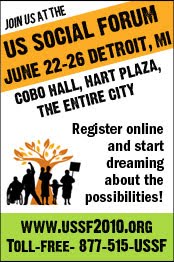Given the situation in Wake County with the struggle over public school diversity policy, I thought it would be good to reprint this document which outlines some reflections I have been sharing with people on the issue of diversity and how it relates to democratic practice in education. Please share any thoughts you have. There needs to be a vibrant discussion that goes beyond the good people/bad people – diverse/segregated – resources/no resources type of thinking that is much of the current discourse.
(0) All children learn all the time unless there is a serious and rare neurological pathology (brain damage or deformity).
(0a) Education should foster the development of the whole child into a healthy, meaningful, engaged, informed, empowered/powerful and capable adult through being a healthy, meaningfully engaged, informed, and nurtured child.
(1) Standardized tests are not good means of assessing the full range of human development children are capable of and which is needed by the community.
(1a) Real world evaluation is pluralistic, multi-dimensional and recognizes the complexity of the world as well as the value of the divergence of the interests, talents and needs of children.
(2) Children develop best when family and community guide their development with access to adequate resources.
(2a) Resources can be shared fairly if there is a social commitment to do so. Directly fighting for that social commitment is better than backdoor approaches at equity through external advocacy. (“Money will follow the white children.”) We should fight for what we need.
(2b) Community should set the education agenda — not courts, not corporations, not government. Only this way can the necessary social critique be present in the classroom along with an ongoing evaluation of teachers, curriculum and resources/facilities.
(2c) Parents and community should be directly involved in the selection of teachers and curriculum as well as maintenance, expansion and replacement of facilities and materials.
(3) The most important factor in education is building relationships. No teacher is expert on every subject that may be of interest to their students. But teachers should be infectiously enthusiastic and good at learning. Mastery of material should be augmented with external access to resources and expertise.
(3a)The importance of modeling the excitement and possibilities of learning, encouraging, motivating and nurturing students can not be overestimated.
(3b)Neither expertise in subject matter nor expertise in teaching technique can substitute for the damage caused by negative messages sent to [taught to] vulnerable children.
(4) Desegregation had various motivations as well as good and bad results. Analysis of those struggles should not oversimplify them negating their complexity and richness.
(5) Separate schools are not inherently unequal, but segregated schools that exclude some category of children based on assumed inferiority, whether innate, acquired or cultural, are morally odious. The difference between “separate” and “segregated” needs to be understood as well as the incredible educational achievements that were made even under conditions of segregation.
(5a) Local plans that are coercive to parents and community, ignoring their desires and shunning their involvement and input should be examined closely to see if the social end that is being promoted justifies the abandonment of democracy.
(6) Equality is a difficult concept to define precisely given differences in the needs, interests and abilities of children and the multi-dimensional nature of education. We should seek to guarantee the provision of appropriate and adequate resources and support.
(7) The key to literacy education lies in the importance of “reading the word” to facilitate “reading the world.” For students to make the effort to learn to read well they would have to find reading liberating and empowering. When students tell teachers the curriculum is boring we should listen and change. Either teachers should make a better connection of the material with the student’s lives and interests or change material.
(8) We should value and validate student’s humanity and their day to day reality as the important first step toward building nurturing, empowering relationships and toward developing engaging, stimulating and challenging pedagogy.
(9) Phrases like “avoiding racial isolation” have become coded passages for assumptions of inferiority as they are applied to some groups and not others. Isolated white groups are often seen as normative with little need to avoid their establishment. Much of the language around the achievement gap calls on other groups of students to reach their level on what are often culturally biased metrics.
(10) “Voluntary” as used to describe Seattle and Louisville plans simply means non-court mandated but carries the connotation of freedom for community. Racist segregation plans were “voluntary” in that same sense, coming generally from the legislative bodies and school boards rather than the courts. The Topeka, Kansas plan in 1953 was voluntary, but no one calls Jim Crow education policy “voluntary.” In the discussion of the Seattle and Louisville plans “voluntary” is used to imply “reasonable” to prevent the discussion of their content.
(11) Minority students should be allowed to be in the majority in some schools if some natural neighborhood patterns or desire of the students involved and their parents creates such conditions. To disallow this is as inherently bad is to place an unfair burden on black children and families as it implies that something is wrong those who are not allowed to be concentrated. Sometimes the concentration of minority groups as majorities within institutions will create the only opportunity them to feel normal and just be students. In addition it increases the opportunity for leadership positions and participation on the broadest range of extra-curricular activities which are also part of learning. The motions toward separation initiated by blacks like the rise of the black church after emancipation were often based on such reasoning.
(12) We should remember that most of the arguments against the recent Supreme Court ruling would also be arguments for the elimination of historically black colleges and universities as well as black churches and civic groups.

